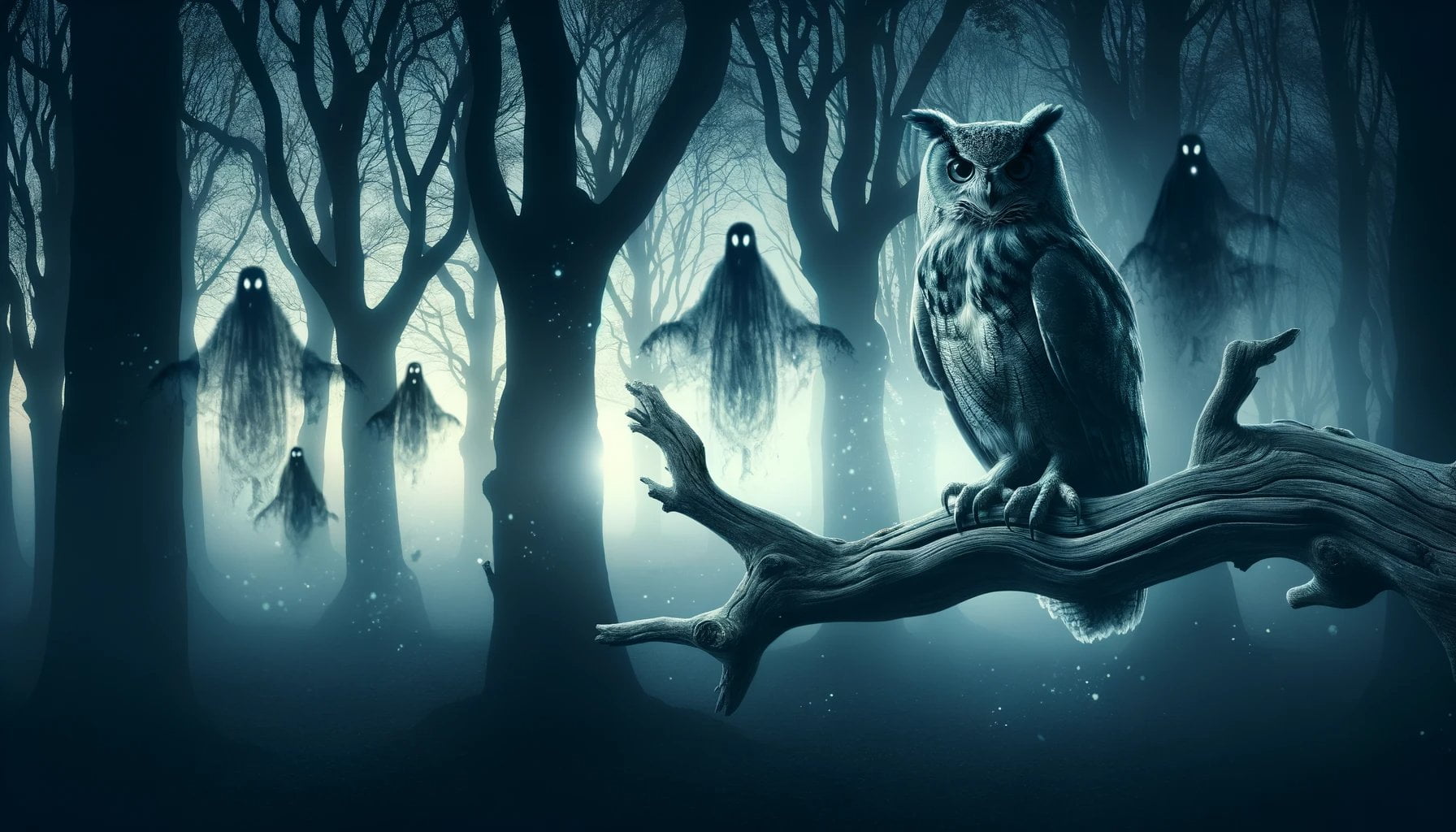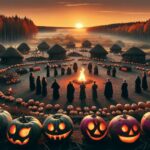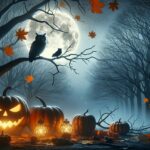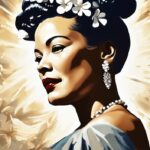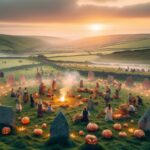Discover the fascinating origins behind owls’ association with Halloween in “The Enchanting Origins: Why Owls Became an Essential Symbol of Halloween.” Throughout centuries, owls have held a mystical allure, with their nocturnal habits and haunting calls capturing the imaginations of people around the world. From ancient folklore to modern pop culture, this article delves into the captivating reasons why owls have become an integral part of this widely celebrated holiday. Join us as we unravel the intriguing connection between owls and Halloween, exploring the rich symbolism and uncovering the secrets behind this enchanting association.
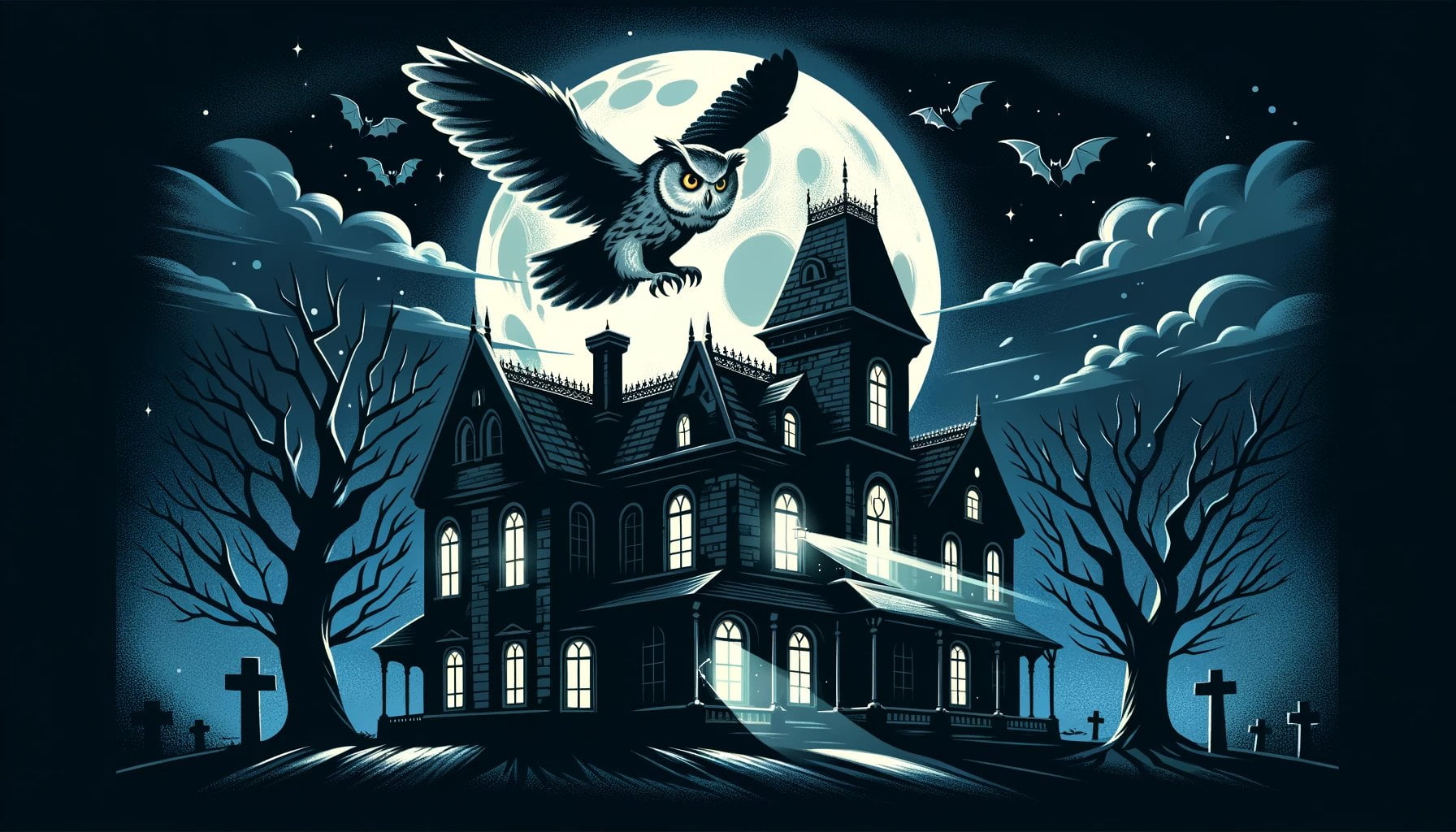
Key Takeaways:
- Owls became an essential symbol of Halloween due to their historical ties to Celtic traditions and mythology.
- In Celtic mythology, the owl was seen as the ruler of the night, the seer of souls, and the guardian of the underworld, aligning it with Halloween’s focus on death and the spiritual realm.
- Ancient Romans also believed that owls were associated with death and darkness, considering encounters with owls as bad omens.
- Owls have long been considered harbingers of death and have been associated with witchcraft and the occult, contributing to their connection with Halloween’s spooky atmosphere.
- The owl’s image and symbolism continue to be prevalent in Halloween decorations and imagery, adding an air of mystery and eeriness to the holiday.
Why Are Owls Associated with Halloween?
Halloween, the beloved holiday filled with spooky traditions and ghostly imagery, has a deep-rooted association with owls. These mysterious creatures have long been connected to death and the underworld, making them a fitting symbol for this enchanting celebration.
The Celtic Connection
One of the main reasons why owls are associated with Halloween is their historical ties to Celtic traditions. Halloween is believed to have originated from Samhain, the Celtic new year. During Samhain, it was believed that the barrier between the physical and spiritual worlds was thin, allowing ghosts to rise up from their graves and roam the streets. In Celtic mythology, the owl was revered as the ruler of the night, the seer of souls, and the guardian of the underworld. This deep connection with death and the spiritual realm solidified the owl’s association with Halloween.
The Roman Superstitions
The owl’s association with death and darkness was not limited to Celtic mythology. In ancient Rome, hearing an owl hoot or catching sight of one during the day was considered a bad omen. Romans believed that encountering an owl foretold one’s impending encounter with the Grim Reaper. Some European cultures even took extreme measures, such as nailing a dead owl to their doors, to ward off evil spirits. These prevalent beliefs further strengthened the owl’s association with death and the supernatural.
A Bad Omen
Owls have historically been seen as a bad omen due to their nocturnal nature. As creatures of the night, they have often been associated with witchcraft and the occult. Their ability to fly swiftly and hunt silently adds to their eerie reputation. The haunting sound of an owl’s shriek or hoot can send chills down one’s spine, reinforcing their association with Halloween and its spooky atmosphere.
The Enduring Symbolism
Despite the changing times, owls have maintained their prominent role as symbols of Halloween. Their image continues to be prevalent in decorations and imagery, adding an air of mystery and eeriness to this beloved holiday. Their association with death, the underworld, and the spiritual realm has become ingrained in Halloween tradition, capturing the imaginations of people young and old.
Conclusion
Owls have a fascinating and enchanting connection to Halloween, rooted in their historical ties to death and the underworld. From Celtic mythology to Roman superstitions, these nocturnal creatures have been associated with the spiritual realm and have been seen as harbingers of death. Their symbolism continues to captivate and add an extra touch of intrigue and spookiness to the celebration of Halloween.
References
[1]: “Why Are Owls Associated With Halloween? Origins Uncovered”. lovetoknow.com. URL
[2]: “What Are Birds Associated With Halloween?”. blog.mybirdbuddy.com. URL
[3]: “Why Owls Are a Spooky Symbol of Halloween, According to a …”. marthastewart.com. URL
Halloween, the spooky celebration we know today, has its roots in an ancient Celtic festival. Discover which ancient Celtic festival is considered the origin of Halloween here and let the mysteries unfold!
Have you ever wondered when Halloween first made its way to America? Delve into the fascinating history and find out when Halloween first came to America by clicking here. It’s a tale that will amaze you!
Uncover the ancient origins of Halloween and satisfy your curiosity. Learn about the intriguing ancient origin of Halloween here and embark on a journey through time.
The Role of Owls in Witchcraft and Magic
Owls have long been associated with witchcraft and magic, weaving enchantment and mystery into the fabric of Halloween traditions. Let’s explore the captivating origins and enduring significance of this enchanting association.
In European folklore, owls were linked to witches and the supernatural. They were believed to be familiars or companions to witches, aiding them in their magical practices and serving as intermediaries between the witch and the spirit world. This connection between owls and magic gave rise to their association with Halloween.
Medieval times further solidified the association between owls, witches, and magic. In those days, owls were even believed to be witches or wizards in disguise, adding to their mysterious allure. Through old illustrations of witches and wizards, owls were frequently depicted, emphasizing their significance in magical realms.
Owls’ symbolism as indicators of nearby death, hauntings, and bringers of bad luck also fueled their association with witchcraft and magic. This belief in the supernatural power of owls contributed to their reputation as factors of fear and mystery.
The connection between owls and Halloween can be traced back to ancient superstitions and beliefs. Alongside bats, toads, and crows, owls were associated with this festive holiday due to their connections with darkness, magic, and the supernatural. Owls embody the mysterious and mystical nature that resonates with Halloween traditions.
Key Takeaways:
– Owls have been associated with witchcraft and magic in European folklore.
– They were believed to be familiars to witches, aiding them in their magical practices.
– Owls are often considered symbols of Halloween due to their historical association with witches and the spooky characteristics attributed to them.
– In medieval times, owls were believed to be witches or wizards in disguise.
– Owls, with their association with death, hauntings, and bad luck, have been a symbol of fear and mystery throughout history.
– The connection between owls and Halloween can be traced back to ancient superstitions and beliefs.
Sources:
1. Martha Stewart: Why Owls Are a Spooky Symbol of Halloween, According to Folklore
2. LoveToKnow: Why Are Owls Associated With Halloween? Origins Uncovered
The owl as a messenger between the spirit world and the living
Halloween, a celebration with ancient roots, is intricately intertwined with symbolism and folklore. One captivating aspect of this holiday is the association with owls. These enigmatic creatures hold a special place in Halloween lore, as they are believed to be messengers between the realms of the living and the dead.
During Samhain, a precursor to Halloween, the Celtic cultures believed that the boundary between the living and the dead became blurred. It was during this time that rituals were performed to honor and communicate with departed souls. Owls, with their nocturnal habits and mysterious presence, were revered as significant messengers between these two realms. They embodied the magical and ethereal nature of the spirit world, connecting it to the earthly realm.
Owls have long been considered spiritual guides and messengers in various cultures. They hold symbolic meanings associated with wisdom, insight, and intuition. In many traditions, owls are believed to bring messages from the spirit world to humans, serving as intermediaries between the realms of life and afterlife.
The association between owls and Halloween also stems from their symbolism as creatures of wisdom and intelligence. Owls are renowned for their strategic planning and hunting skills, relying on their intellect instead of brute force. While some cultures view owls as witches of death, the white owl is often seen as a symbol of wisdom and spiritual insight.
It is important to note that while owls hold a prominent place in Halloween folklore, they are not the only animals associated with this holiday. Cats, particularly black cats, are strongly connected to Halloween, embodying both good and bad luck. Bats, spiders, and ravens are also linked to Halloween due to their nocturnal nature and their association with darkness and mystery.
The connection between owls and Halloween can be traced back to ancient beliefs and traditions. Their mysterious presence and nocturnal habits make them the perfect messenger between the living and the dead during Samhain. Owls’ symbolism as spiritual guides and wise creatures further solidifies their enduring association with Halloween.
Key Takeaways:
- Halloween has a rich history rooted in ancient traditions and beliefs, with owls playing a significant role in the holiday’s symbolism.
- Owls are believed to be messengers between the realms of the living and the dead during Samhain, a precursor to Halloween.
- In many cultures, owls are considered spiritual guides and messengers, bringing messages from the spirit world to humans.
- Owls’ association with Halloween also stems from their symbolism as wise creatures, known for their strategic planning and hunting skills.
- Other animals, such as black cats, bats, spiders, and ravens, are also linked to Halloween due to their nocturnal nature and mysterious characteristics.
Sources:
– Getnamenecklace Blog – Why Are Owls Associated With Halloween?
– Mindbodygreen – Owl Symbolism: 6 Spiritual Meanings Of This Wise Bird (By Color)
Contemporary Popular Culture’s Influence on the Association Between Owls and Halloween
As Halloween approaches, our fascination with the mystical and the spooky grows stronger. One image that frequently comes to mind when we think of Halloween is the enigmatic owl. But why are owls so closely associated with this holiday? Let’s explore the intriguing connection between owls and Halloween, focusing on the influence of contemporary popular culture.
Since the Middle Ages, owls have been a symbol of Halloween, shrouded in mystery and folklore. However, their prominence in popular culture has further intensified their association with the holiday. In modern times, owls can be seen in various forms of media, such as movies, books, and artwork, adding an air of fear and suspense.
Owls in Popular Culture:
In movies and literature, owls are often depicted as foreboding creatures that haunt the night sky. Their haunting hoots and ability to silently glide through the air evoke a sense of eerie anticipation. Many horror films use owls as a visual symbol to heighten the suspense and create an atmosphere of dread. Their presence in popular culture has solidified their association with Halloween.
Halloween Imagery:
When we think of Halloween, vivid images of pumpkins, witches, ghosts, and, of course, owls come to mind. Halloween decorations often feature owls perched on bare, eerie trees or soaring through the dark, moonlit sky. Their piercing eyes seem to hold ancient secrets, adding to the mystique of this beloved holiday. This imagery has been perpetuated by popular culture, reinforcing the association between owls and Halloween.
Other Wildlife Symbols:
While owls play a significant role in Halloween, other creatures of the night are also associated with this holiday. Bats, with their mysterious flights and tendency to gather in the autumn, represent the changing seasons and the transition between life and death. Toads and crows, with their dark and enigmatic nature, have also become symbolic of Halloween. Together, these creatures create an immersive experience where folklore and contemporary popular culture intertwine.
Key Takeaways:
– Owls have become closely associated with Halloween due to their historical ties and influence in contemporary popular culture.
– In modern times, owls are depicted as fierce and haunting creatures in movies and literature, intensifying the fear factor of Halloween.
– Halloween imagery often features owls, with their enigmatic gaze and nocturnal habits, adding to the mystique of the holiday.
– Other wildlife species, such as bats, toads, and crows, are also associated with Halloween due to their eerie characteristics.
– The captivating connection between owls and Halloween reflects the fusion of ancient traditions and contemporary influences.
URL Sources:
- Malevus – Why Are Owls Associated with Halloween?
- Martha Stewart – Why Owls Are a Spooky Symbol of Halloween, According to Folklore
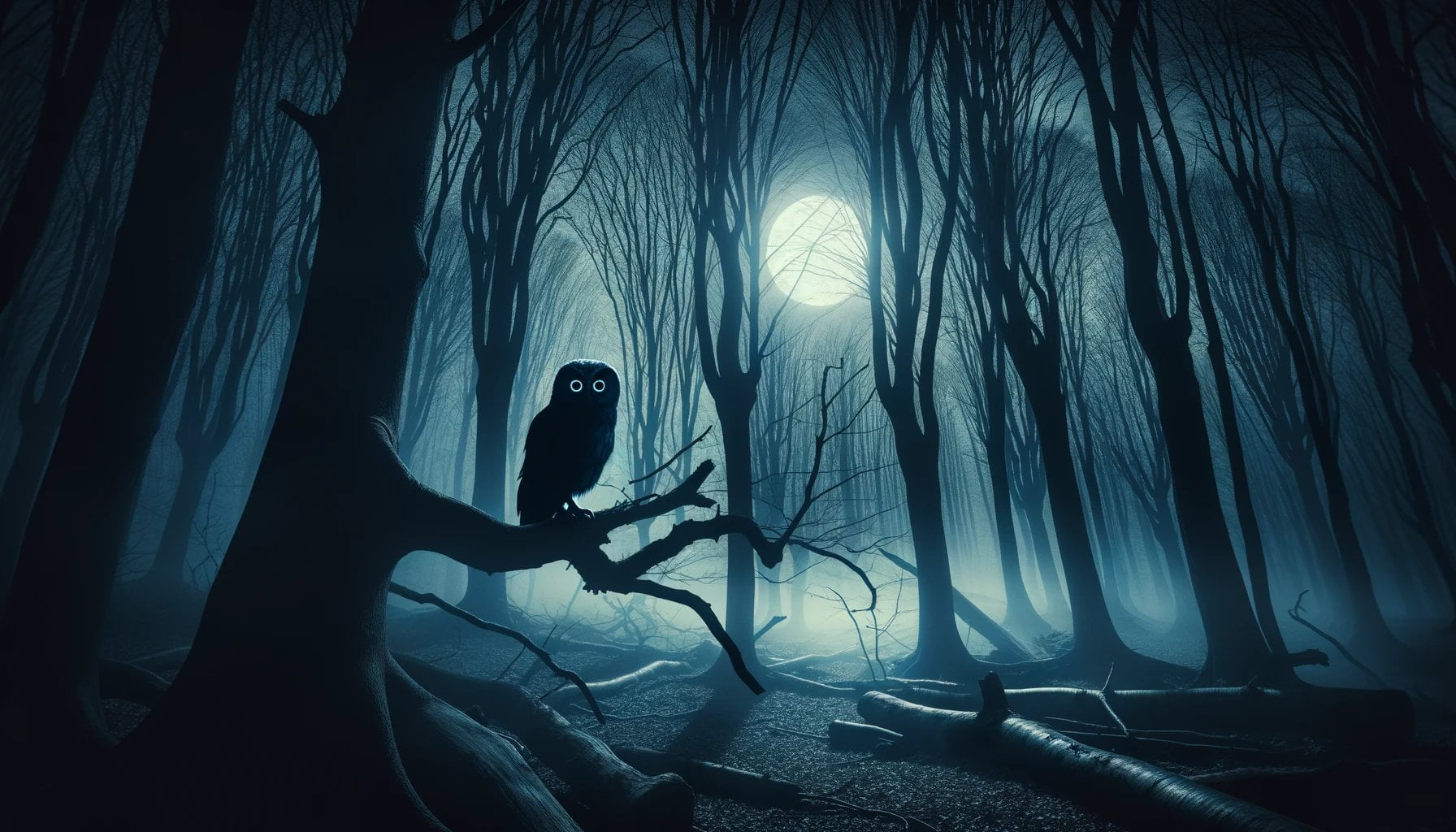
FAQ
Q1: What is the historical connection between owls and Halloween?
A1: Owls have a historical connection to Halloween due to their association with death, the underworld, and the spiritual realm in various cultures and mythologies, such as Celtic and Roman traditions.
Q2: Why are owls considered a symbol of Halloween?
A2: Owls are considered a symbol of Halloween due to their nocturnal nature, mysterious presence, and their historical association with witches, familiars, and the supernatural. They embody the mystical and eerie atmosphere that is often associated with Halloween.
Q3: How are owls related to Samhain, the Celtic new year?
A3: Samhain, the Celtic new year and precursor to Halloween, was believed to have a blurred boundary between the physical and spiritual worlds. Owls were considered messengers between the realms of the living and the dead, symbolizing the connection between Samhain and the spirit world.
Q4: What other animals are associated with Halloween besides owls?
A4: Besides owls, other animals associated with Halloween include cats (especially black cats), bats, spiders, and ravens. These animals are linked to Halloween due to their nocturnal nature, association with darkness, and their roles in folklore and mythology.
Q5: What is the symbolism of owls on Halloween?
A5: Owls symbolize wisdom, insight, and intuition on Halloween. Their association with the spiritual realm and their reputation as messengers between the living and the dead adds to their symbolism on this holiday. They also enhance the mysterious and mystical atmosphere that Halloween embodies.
- Sept 31 Myth: Unveiling Calendar Secrets - March 18, 2025
- How Long & Till December 18, 2025: Accurate Countdown Guide - March 18, 2025
- Discover Japanese Artists: A Complete History - March 18, 2025
